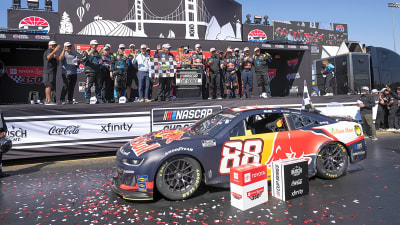Powder aims to feature only the best products and services. If you buy something via one of our links, we may earn a commission.
Over the past few seasons, freeride skis have seen quite a resurgence in popularity. Things have gotten pretty damn good on the construction and shaping front for skis around the 110mm-underfoot mark, making this category an excellent choice for everyday skiing at most resorts west of the Mississippi, especially if you like to venture off-piste. While they can certainly handle deep days, I’d consider this 110ish-waisted category to not quite fall in the realm of dedicated powder-only skis, since they mostly all perform admirably in firm conditions as well.
This year, Salomon debuted a newly updated version of the S/LAB QST Blank, and blackcrows officially released their completely re-designed Corvus. On paper, these freeride weapons might look very similar, but after a season of extensive testing (spoiler: I really like both of these skis), I found some distinct differences that might help steer you towards a favorite if you’re looking for a new freeride ski in the quiver.
Salomon QST Blank Specs
- Size skied: 186cm
- Lengths available: 170cm, 178cm, 186cm, 192cm
- Sidecut: 139cm - 112cm - 128cm
- Radius: 19m (@186cm)
- Profile: Twin Rocker, with camber underfoot
- Weight: 2070g (@186cm)
blackcrows Corvus Specs
- Size skied: 186.2cm
- Lengths available: 169.4cm, 176.3cm, 181cm, 186.2cm, 191.4cm
- Sidecut: 137 mm - 110mm - 120mm
- Radius: 25m (@186.2cm)
- Profile: Twin Rocker, with camber underfoot
- Weight: 2075g (@186.2cm)
What’s the story behind these skis?
The evolution of a ski line is something I really enjoy watching. As skiing evolves, so does its equipment, with engineers and designers burning the midnight oil to keep up with industry trends, athletic progression, and technological advancements. Both the QST Blank and the Corvus are part of that evolutionary process for their brands, representing the flagship freeride product for Salomon and blackcrows, respectively.
While Salomon might call the QST Blank a second-generation 2.0 product, I learned that its roots go far deeper when I spent a day at their Annecy, France design center last winter. The original QST Blank, released in 2021, was the culmination of years of effort to bring a hard-charging freeride ski back to the QST line. Previously, the QST 118 had occupied that spot, but it was much more of a deep-snow-specific tool than a versatile freeride stick. Look inside both of these skis, however, and you would notice striking construction similarities, particularly the cork tip inserts that give these skis their trademark damping. The 2025 QST Blank takes that design philosophy and iterates it yet again, taking three years of athlete and consumer feedback on the original Blank and the subsequent QST X to create arguably Salomon’s best wide ski yet. In short, the design team set out to create a ski that both FWT athletes like Tenra Katsuno, legends like Cody Townsend, and everyday powder-obsessed resort skiers would get along with. They certainly accomplished that goal.
For blackcrows, the Corvus has been their trademark ski since day 1. Designed and tested just up the valley from Salomon’s Annecy headquarters in a little town called Chamonix, the Corvus is blackcrows’ take on the age-old issue: how to design a ski that excels in all conditions you might find in big mountains. Now in its fifth iteration, the Corvus (literally Latin for “black crow”), has stayed true to its roots as a wide-waisted ski for traditionally-minded big-mountain skiers. What does that mean? Big turns, high speeds, and more of a charge-y style than doinking around on sidehits. It’s also always been a ski that’s light enough for short tours (gotta get to the goods somehow in Cham), and the new version is no different.
How we tested both skis:
Given that these skis are decidedly extremely similar, and I had both available to test at home for most of the season, I spent A LOT of time on both riding freeride lines here in the Tetons. Turns out Jackson Hole and Grand Targhee make excellent venues for testing these skis, thanks to the incredible variety of terrain both in and out of bounds here. Both were mounted with Look Pivot 15s, and I eventually converted the Corvus’s bindings to a CAST system to unlock uphill travel potential.
In short, it’s really cool to see how skis designed to achieve similar goals can feel so different on snow. To me, it’s a constant reminder of the freedom of freeride skiing: there’s really no right or wrong way to do it, and that’s what keeps me coming back with fervor year after year.
Like just about everything else in their current QST line, Salomon’s new QST Blank is one of, if not the most approachable wide freeride ski I’ve ever been on. It might look daunting, especially to intermediate skiers used to narrower skis, but it’s unbelievably easy to ski. There’s some magic going on inside of there, with a unique combination of a surprisingly soft flex and a really quiet, damp construction. The new Blank greatly improves upon the old version’s deep snow performance (it actually floats now) and retains the crud-busting auto-pilot feel in variable snow. It even adds more playfulness and pop, something I know more freestyle-oriented skiers on the Salomon team had requested.
Whether I was railing groomers on firm mornings, finding inbounds airs to link together, or dropping into powder laps out of bounds on Cody Peak, the QST Blank was the type of ski I felt like was an extension of my body. It’s intuitive, it’s incredibly responsive, and it has gobs of shock absorption. My only gripe? It’s a lot of work in tight, technical sections (something I was reminded of when making about 100 hop turns down a completely re-frozen backcountry run late in the day). My legs were absolutely smoked.
Where the QST Blank is an approachable, everyperson’s freeride ski, the blackcrows Corvus is a bit more of a precision tool for the big-mountain freerider. While quite stiff, it doesn’t have the same autopilot/ mistake-erasing feel of the Blank. It does, however, have more on tap for skiers looking for a true big-mountain tool that can handle anything wild mountains will throw at you, especially if you like to ski fast and powerfully. It excels in technical steeps, thanks to the much longer 25m turn radius that–somewhat counterintuitively–provides excellent edge grip and easy pivoting. I’ve found that a long radius mixed with nearly-flat camber makes for better edge grip when things get really steep and firm, something that the steep-skiing-specific blackcrows Solis exemplifies. The pintail shape and healthy tail rocker allow the ski to easily release and smear turns without having to dump speed excessively. Pressure the your boot with the ski in that position, and the edges grip instantly to drop speed.
In other words, I found that the Corvus, while still extremely fun in most places, is a bit less versatile than the Blank. Namely, it needs some room to breathe, and prefers terrain of the gnarlier persuasion. Think sidecountry couloirs, the techy lines through your resort’s hike-to terrain, or big faces accessed by sled, cat, or heli deep in the backcountry. The Corvus feels less energetic and exciting in the resort than other skis, but bring it into its natural big-mountain habitat, and it truly comes alive.
Who are these skis best for?
As mentioned, I really like both of these skis, and intend to keep them in my personal quiver as long as possible. I’ve probably clocked 50+ days on each over the last season and a half, and look forward to growing that number. In short, you can’t go wrong with either of them if you’re looking for a big ski to cater towards your affinity for skiing big terrain, jumping off things, and channeling your inner FWT athlete.
So what’s the main difference between the two? The QST Blank is the better ski for purely resort-based riding, where the Corvus is a better choice for exploring the backcountry with the help of a machine (or your own very strong legs).
More must-reads:
- Chiefs sign star offensive lineman to $94 million deal
- Mavericks center Dereck Lively II reportedly undergoes foot surgery
- The 'No. 1 overall MLB Draft picks' quiz
Breaking News
Trending News
Customize Your Newsletter
 +
+
Get the latest news and rumors, customized to your favorite sports and teams. Emailed daily. Always free!








